This Month, 10% of every order will help support a great cause!
This Month, 10% of every order will help support a great cause!

Many ladies and brides-to-be dream of walking down the aisle in the perfect wedding gown. Their wedding day is the most important day of their lives and something they've planned down to every detail. It is a day when the bride is surrounded by family and friends, all of whom are there to share in her and her future spouse's joy. It's no wonder they want everything to be how they've always imagined.
The wedding gown, as one of the most significant symbols of that day, is among the many highlights of such a magnificent occasion. The bridal gown is a fantasy for most women, and it serves as the lynchpin of all their expectations for their wedding day. This dream dress is not just a dress; it is an embodiment of all the hopes, wishes, and expectations that a woman has for her wedding day and her marriage.
This leads us to a very important question – What is the origin of the dream wedding dress and why does it continue to be so significant for modern brides?
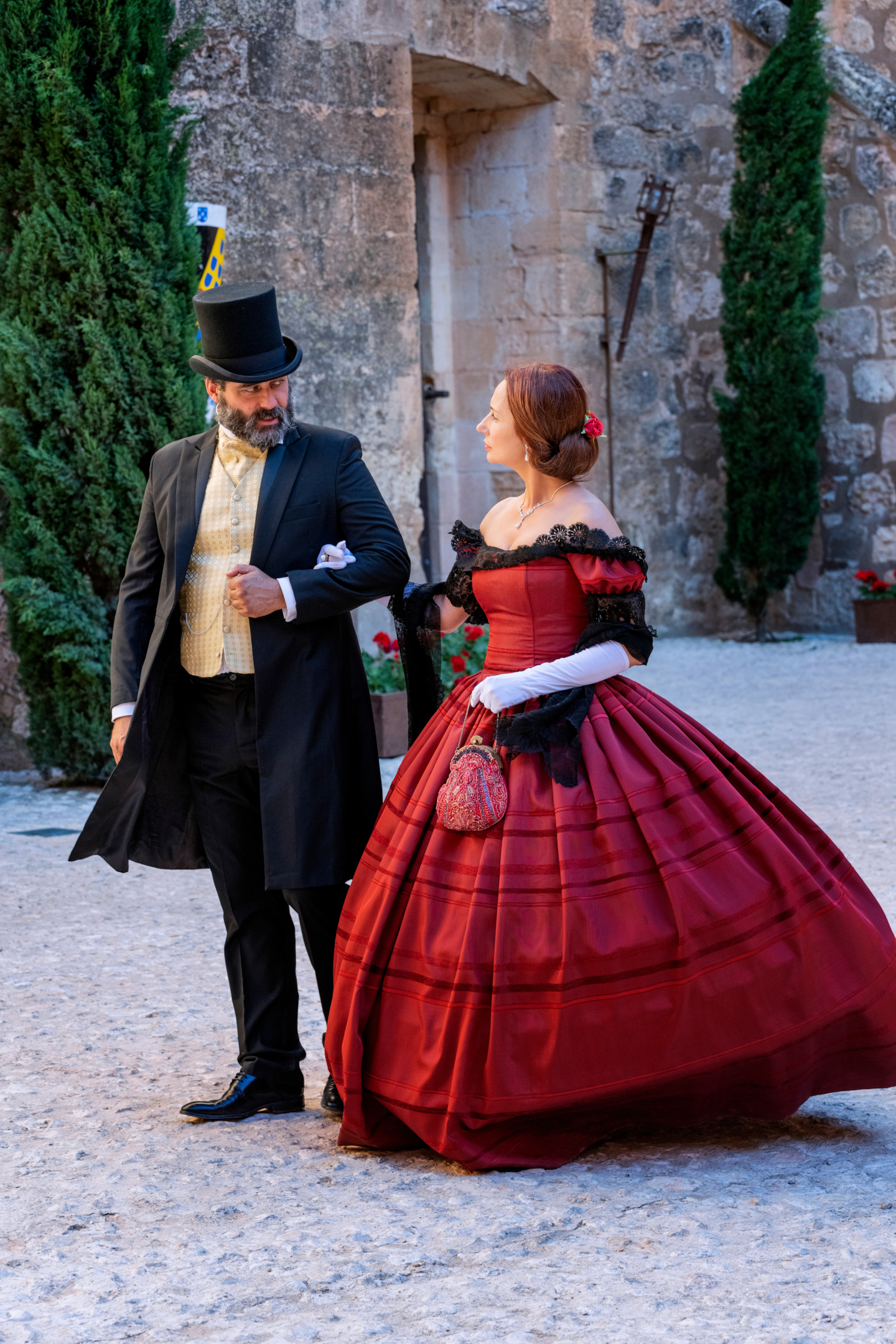
Although colors, fabrics, and design trends for wedding gowns have varied over time, brides have always aimed to look their best for the wedding event. Over the course of human history, people of royal houses and high social standing were known to dress in the most up-to-date fashions in the most luxurious fabric, regardless of expense.
Even those who had little money did their best to dress up on their special day. They still regarded a wedding as an important event and bought a new dress – if their budget permitted – borrowed a nice dress, or wore the finest dress they already owned.
Often, a wedding between two people from upper classes was commonly associated with a connection between two families, nations, or even business empires. The brides concerned knew how important these events were in showing off the strength of the alliance and wore the most magnificent clothes of their time period to display their wealth.
Let's take a look at some of the wedding dress styles and fabrics used throughout the years, starting with turn of the nineteenth century.
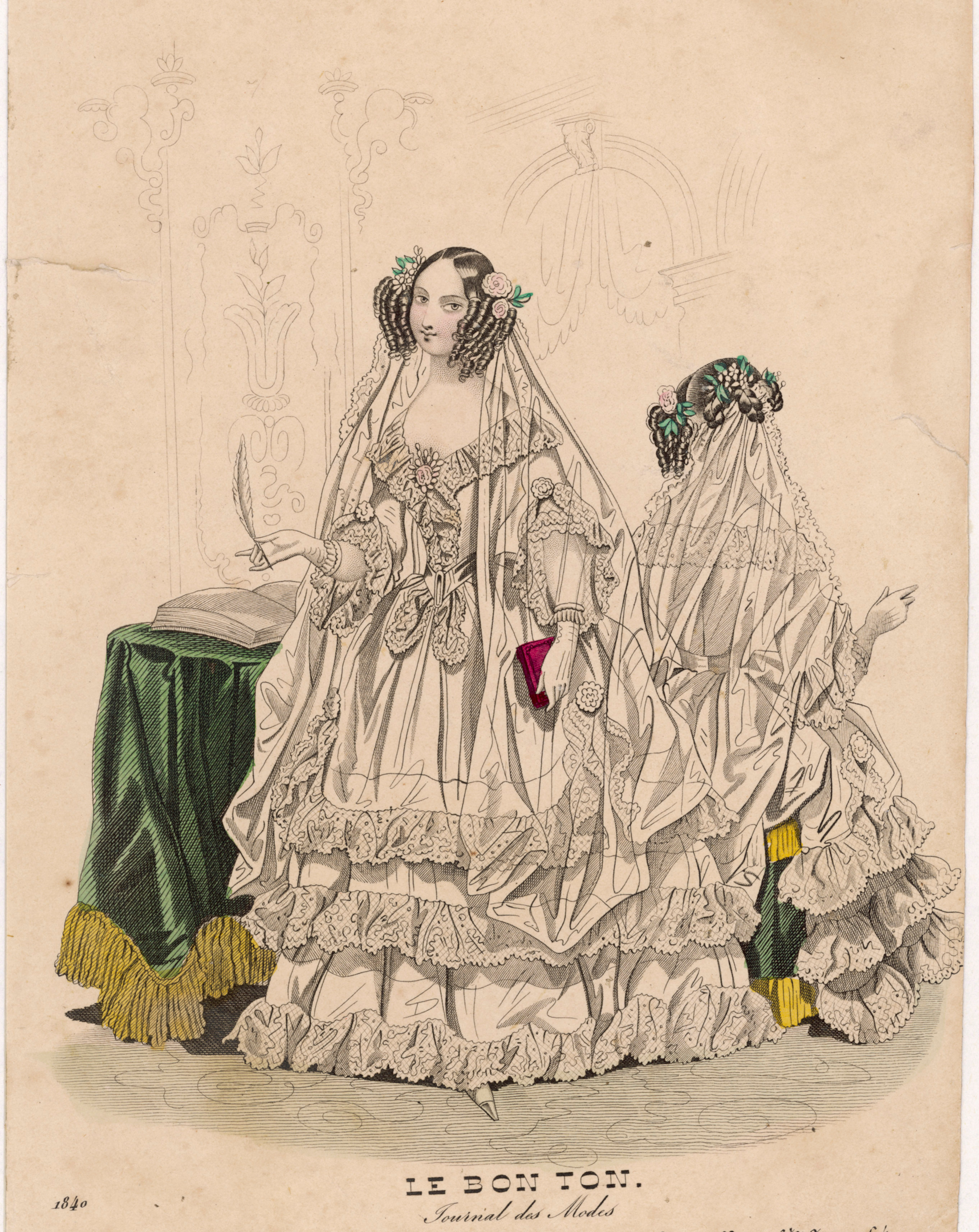
Wedding gown styles before the early 1800s varied considerably depending on the bride's social class and the event's time period. Wealthier brides had the latest fashions, while lower class brides tended to wear plain dresses that were probably a bit out of style. In older times, brides did not have to wear a specific color and were allowed to select from different hues for their wedding gowns, such as blue, red, brown, etc.
It is noteworthy that the tradition of a bride wearing white was started fairly recently, dating to the middle of the nineteenth century when Queen Victoria married Prince Albert in 1840. Although there is evidence of white wedding gowns worn earlier than the nineteenth century, it did not become a true fashion trend until after Queen Victoria's wedding. The English Princess Philippa's wedding to the Scandinavian King Eric in 1406 is recorded as the first recorded instance of a white wedding dress in Western culture. She was dressed in a white tunic with ermine and squirrel fur inside. The wedding of Mary, Queen of Scots, to the soon-to-be King of France in 1558 is another example of a white wedding gown in a long-ago wedding. From thence, white gradually became a popular, but not required color for royal weddings over the next few centuries.
After Queen Victoria's wedding, a new style emerged with its own distinct look. From that point, brides wanted to wear a high-neckline dress with a puffy skirt, which was very much in the second Romantic style of the period and resembled a ballgown. The elaborate frock indicated that a girl's wedding day was significant, representing as it did the golden moment when her life changed forever.
The first part of the dress was a very tight and corseted bodice, connected to a large, draped skirt. The nuptial essence of this gown was symbolized by the color white, the veil, and the bridal wreath. In the years that followed, the styles and silhouettes of wedding dresses changed, with newer designs introduced. Examples include the tubular skirts of the 1870s, corset waists of the 1880s, leg-o-mutton sleeves of the 1890s, and bustles of the early 1900s. These were some of the different styles worn in olden times.
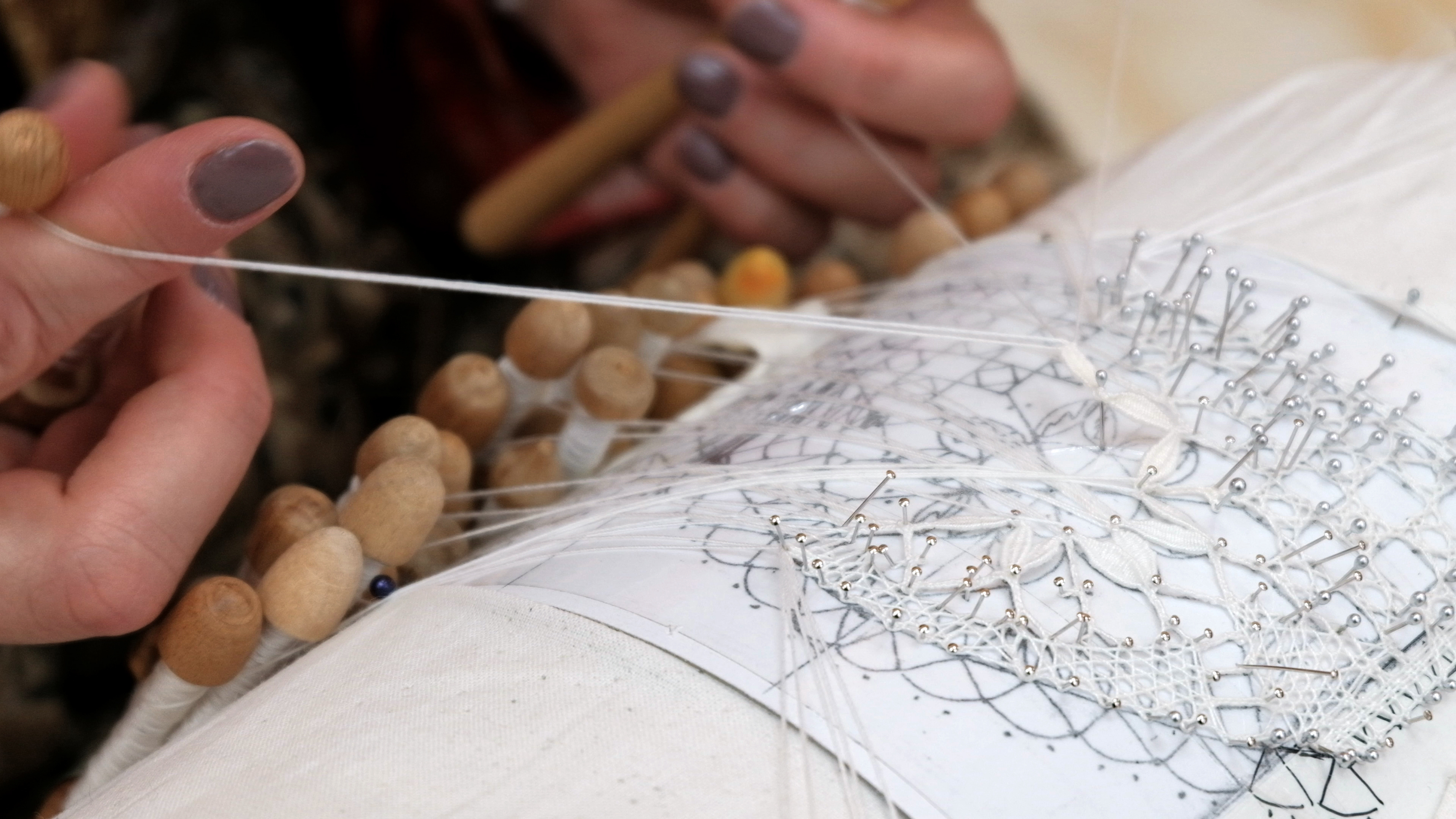
During the time period between 1805 and the 1830s, bridal gowns were made of light, sheer fabrics like muslin and silk satin. Oftentimes, a bride wore a net overlay embroidered with chenille. The wedding dresses invoked those of ancient Greece, with high waistlines, low necklines, simple boning, and shorter puff sleeves.
In the mid-nineteenth century, fashion took a major turn concerning wedding dress fabrics. The white gown style popularized by Queen Victoria of England in 1840 was made out of mostly heavy silk satin. Women began to favor dresses in more opaque textures with huge inner armature to heighten their silhouette. Since the Victorian era, wedding dresses have gone through several style changes.
For example, the wedding gown with a train and the flowing veil became popular in the mid-1870s, following the debut of modest trailing dresses. Whenever it was in vogue, elaborate fabrics, embroideries, laces, braiding, and tassels were used on these wedding dresses. The dresses were frequently made of heavy silk taffeta and crepe fabric. Wedding trims often featured Alencon, Venice, Honiton, and Chantilly laces.
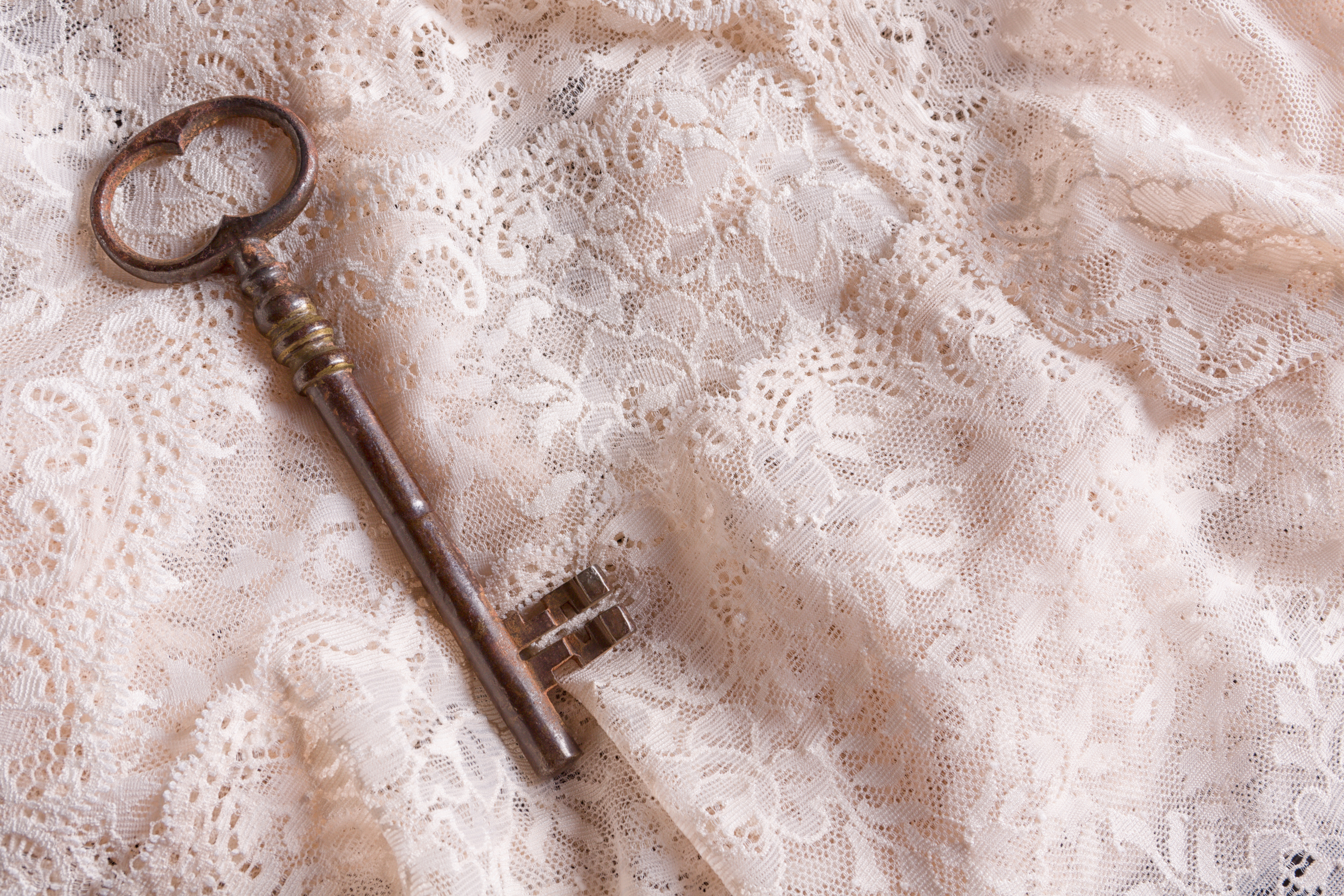
A typical medieval wedding dress was quite intricate. These dresses were often long velvet gowns in rich jewel tones with golden buttons along a beaded bodice and skirt. This style of dress was known as a cotehardie, which is French for "coat."
The cotehardie was made of several layers and reached down to the bride's feet, with fitted sleeves and bodice. These gowns worn by medieval brides were in many different hues, but because blue implied virginity and purity, it was a popular choice.
The most beautiful gowns were made of costly and exquisite fabrics like velvet, satin, and silk fabrics in bright reds and gold. In addition, a more opulent bride may choose a delicate fabric such as brocade silk with intricate designs known as roundels.
Lower-class brides, on the other hand, would replicate the style of high-born ladies as much as possible, but their gowns were mostly made from inexpensive bridal fabrics like cotton and linen.
Finally, a medieval bride would wear a chemise and a breast band, as well as knee-length stockings, beneath it all. Sometimes, over her complete costume, she donned a lovely cloak with a lengthy train. Enormous sleeves and sparkling metalwork belts gave their gowns a royal touch. These features were among the most ornate medieval costumes.
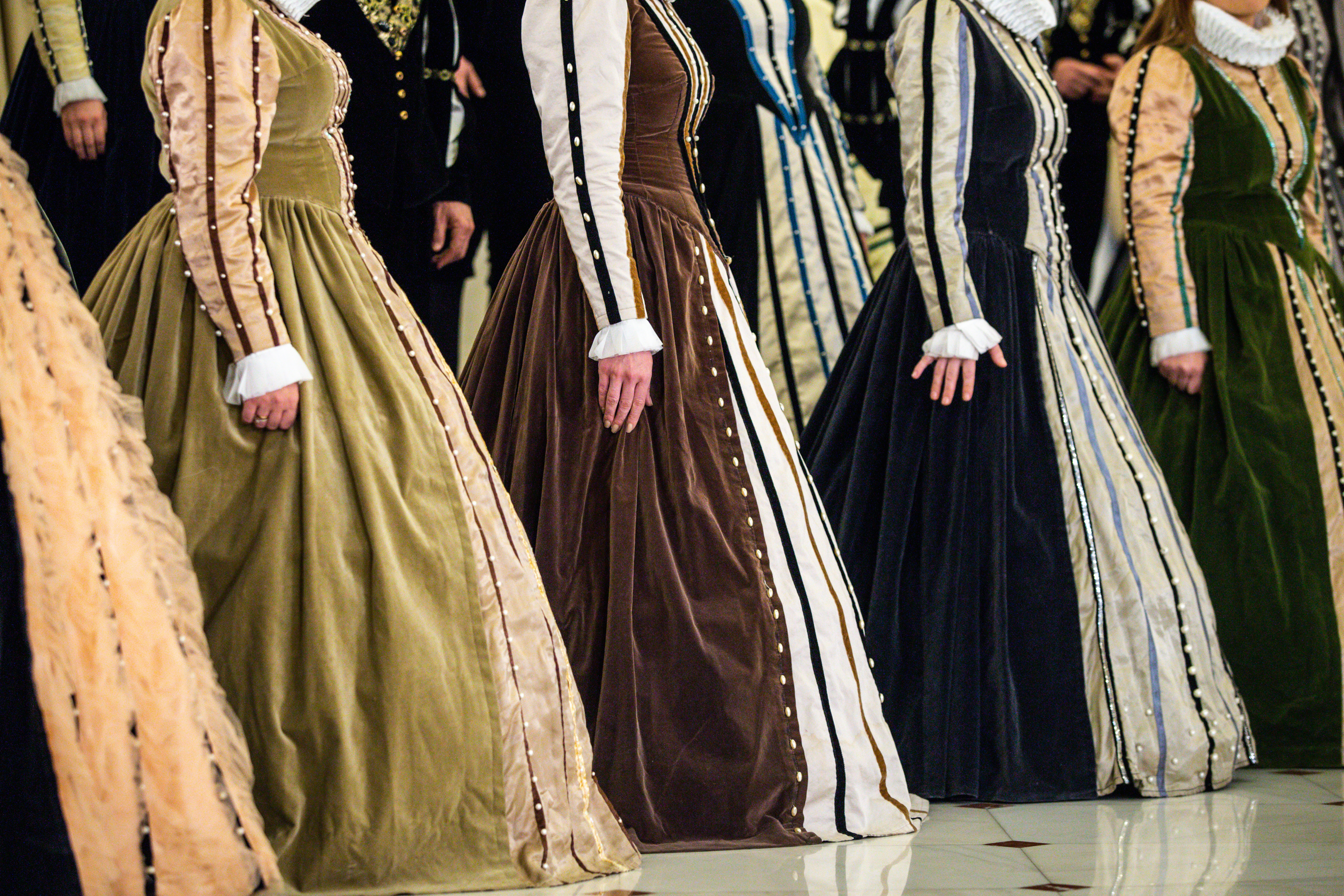
As earlier established, it was the norm for a bride to simply wear her best dress on her wedding day until the 19th century. The color or style didn't matter as much for this event. You could wear whatever was most comfortable and suitable for your big moment!
As a result, various brides used distinct colors based on their personal preferences. Brides commonly favored red, brown, and russet colors in those times. Green and yellow, on the other hand, were seen as bad omens and were completely avoided as colors of choice for the wedding day.
The wealthier brides preferred more fanciful and innovative bridal gowns, implying that she was a member of high society. The commoners, on the other hand, tended to use darker hues. The dark colors of a gown were often seen as more formal and prestigious. They showed off the bride's beauty to its best potential, but were also useful for hiding any stains or imperfections since it was most likely not a new dress.
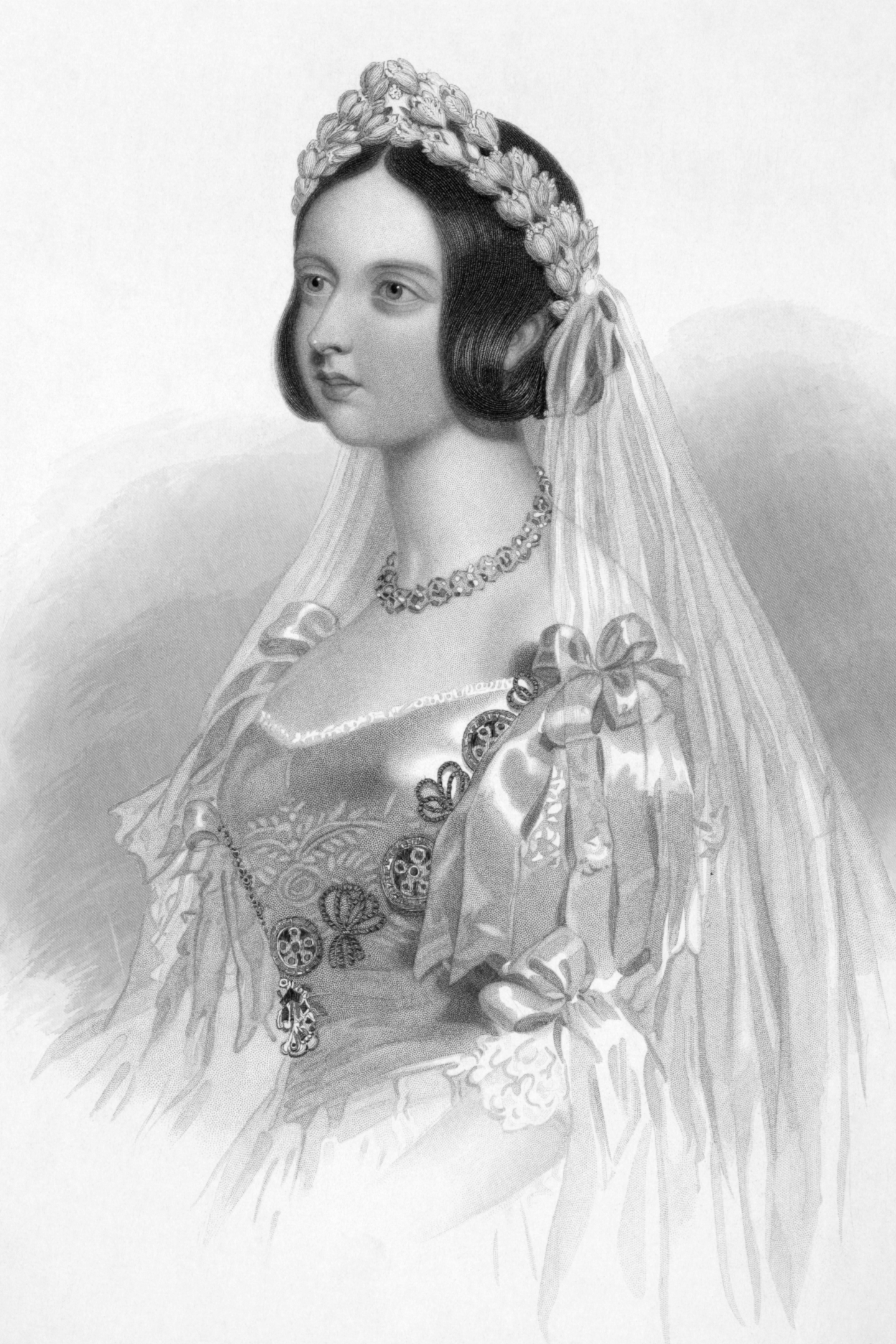
In 1840, something occurred that altered the history of wedding dresses for the remainder of time! That year, Queen Victoria wore an elaborate white gown in her wedding to Albert of Saxe-Coburg and Gotha. She became an overnight sensation because of her magnificent white gown, and the style and color inspired a lot of other brides-to-be. After that, white wedding gowns became the most appropriate color for wealthy brides.
Queen Victoria's elegant impact on wedding dresses was nearly 180 years ago, and her example of wearing white is still followed by many brides today. However, there are a few interesting things to note regarding how this famous gown was created, the wedding dress materials involved, and why these materials were chosen!
To begin, the popular wedding dress fabrics chosen by Queen Victoria were found to have more significant meaning than previously believed. These findings showed that these dress materials are even more historically important in comparison to the color itself.
The royals wanted their wedding to be surrounded by things that were beautiful and luxurious, but also a tribute to the Queen's people and country. To achieve these sentiments, the dressmakers chose cream satin weave fabric from Spitalfields, the historic center of London's silk industry. The dress also featured handmade Honiton lace, which was selected because it would help the fledging lace industry.
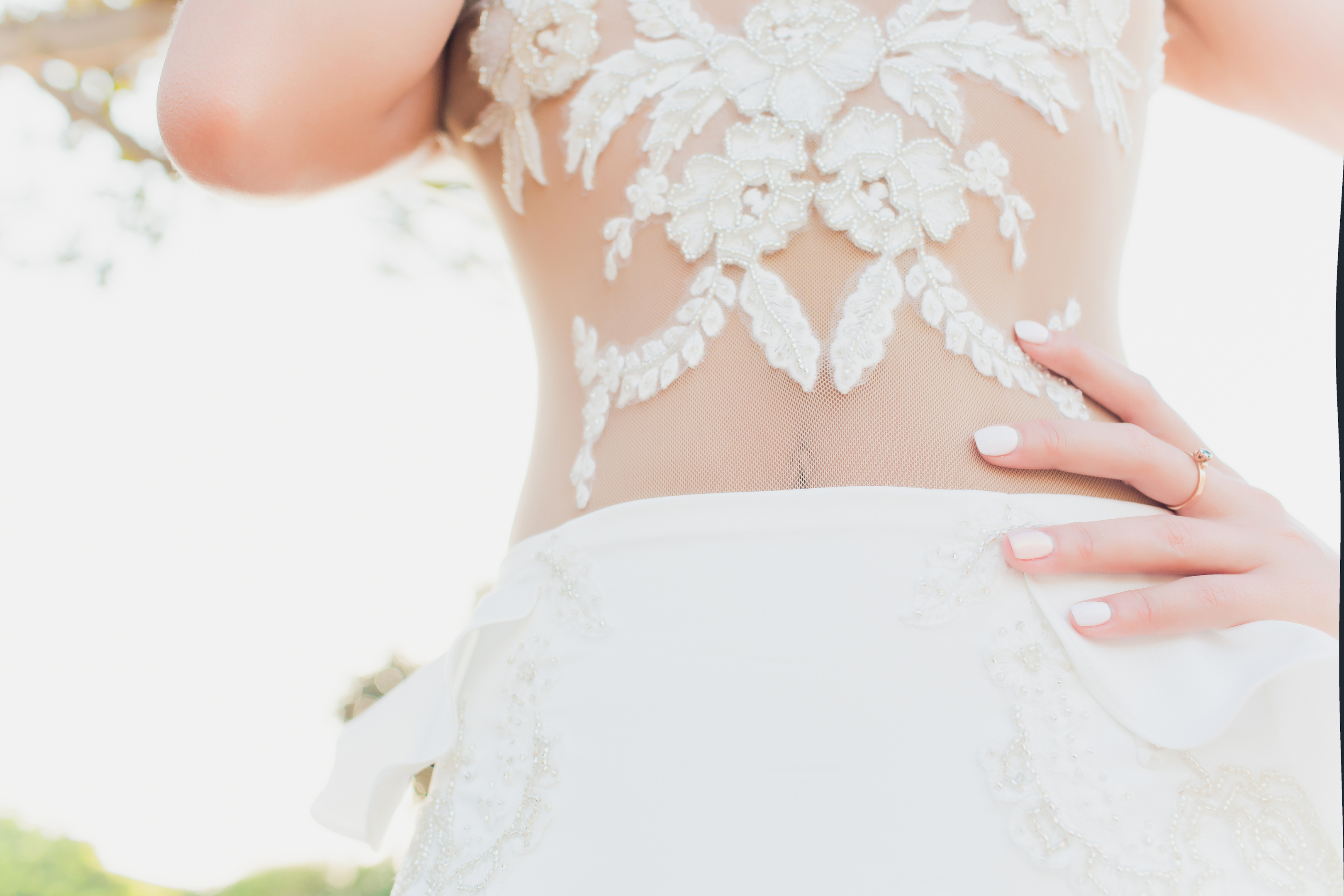
Although there may be some similarities between Queen Victoria's exquisite structured gown and today's wedding gowns, we can all agree that a lot has changed in terms of style and wedding dress material used today. The Victorian style wedding gowns are not quite in vogue these days. Like all popular clothing garments, wedding dress fashion went through several transformations over the last few hundred years.
For example, in the twentieth century, the dress torso became less restricting, the volume of the skirt decreased, and wedding veils became more popular. From the early 1900s through the mid-1930s, technological advancements provided more liberty for women, and this development influenced the fashion of the day. The style of the time was a reflection of this fact. The flapper style dress was a huge hit, making bridal wear considerably more flirtatious and free.
Trends changed at a much quicker pace in the modern era. It seems as though every few years the popular trends are completely different. As silk or synthetic fibers began to dominate all formal wear, we started seeing more and more of it in wedding gowns. In the 2000s, and style and simplicity was queen; strapless dresses or gowns with spaghetti straps were all the rage!
We've seen new designs develop and old ones resurface in recent times (the 2010s to today), and it appears that there is more variety than ever before. In the mishmash of the past and the present, a bride's personal style and preference truly dominates contemporary wedding dress trends.
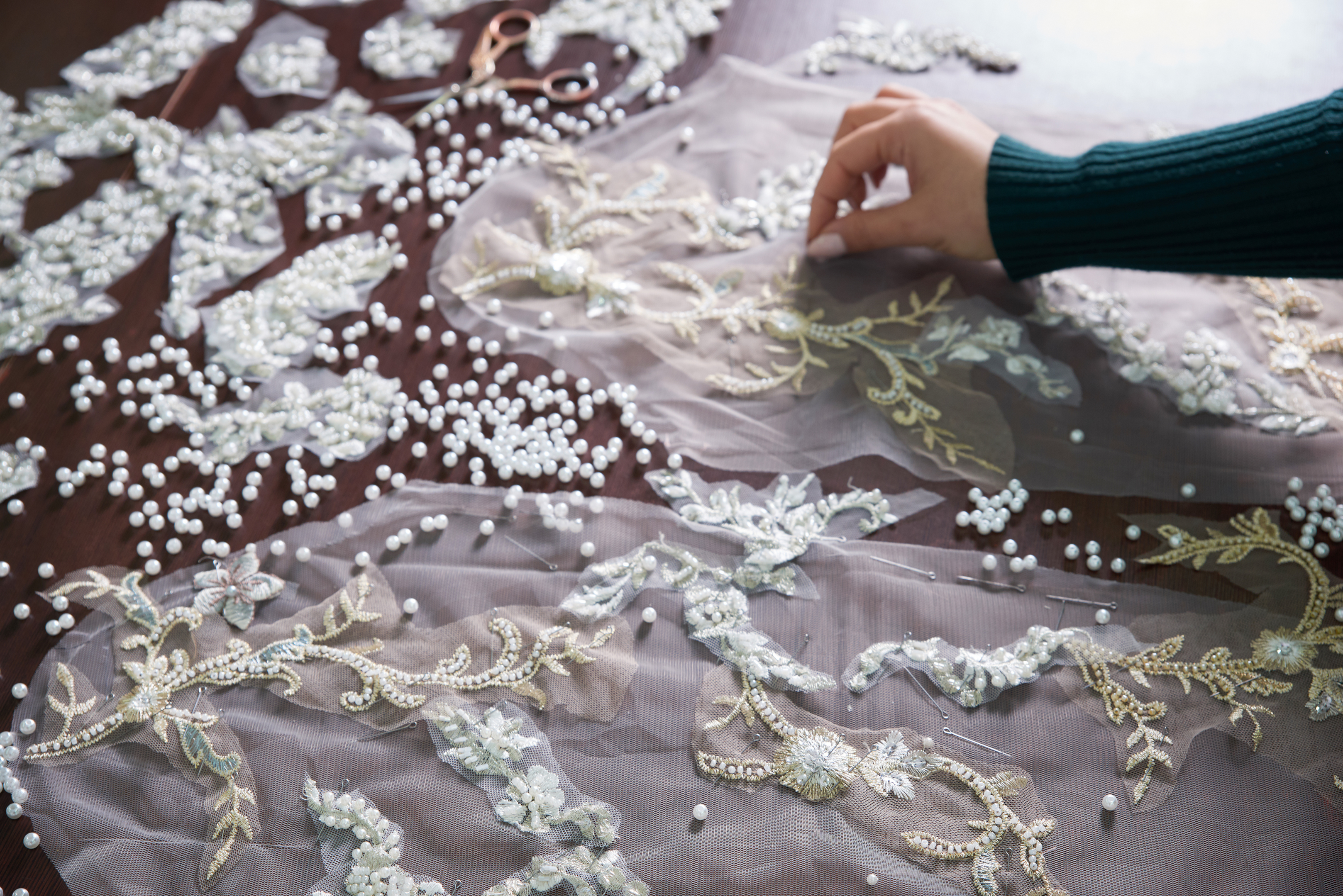
Depending on the design, the textiles used in creating a wedding gown have unique effects. Some fabrics are better for structured designs, while others work well with free-flowing designs and big gowns. It is important to understand what to expect when it comes to the different fabrics before you go wedding dress shopping.
Satin is a weaving pattern, not a raw material, as is commonly believed. It is constructed from a variety of fibers, including silk, nylon, and polyester, and it is generally a smooth, shiny fabric. When searching for a wedding gown, you'll undoubtedly come across bridal fabrics like silk satin, charmeuse satin, duchess satin, and crepe-back satin.
These words are used to define the satin's characteristics and distinguish among the various textures that exist. Satin is a beautiful material that can make your wedding gown elegant and modern. It has an almost silky feel to it, which makes for the perfect attire on your wedding day!
Chiffon is a woven fabric that is incredibly transparent and lightweight. Silk chiffon is frequently used in layers in a chiffon wedding dress, or as an underlay for a heavier cloth because it is so transparent. The flowy, weightless appearance of this sheer fabric belies the fact that it frays and snags rather readily.
The soft, lightweight texture of organza is usually made from silk. When compared to chiffon, silk organza is considerably harder, but not as stiff as tulle. A wedding dress made of organza should be light and flouncy so that it can move with you. To put it another way, organza makes twirling much easier! It is considered as one of the best wedding dress fabrics!
For a lightweight and elegant solution to add more volume, incorporate more layers of organza into a slimmer skirt. Adding additional amounts of organza to a skirt provides volume without extra weight. But this is not all this fabric is used for!
Organza fabric is often used to add a luxurious feel and appearance. It can be decorated with appliques or beads, which will show through where you want it most – like underlays on skirts!
Lace is a very traditional wedding dress fabric that adds elegance to any outfit. Lace is most often seen as an overlay or embellishment and comes in a wide selection of designs. The main disadvantage you may find with this material is that it is susceptible to snags due to its open weave. Varieties of lace include Chantilly, Alencon, and Venice.
Wedding dresses are made of delicate fabrics that need special care to keep them in pristine condition. The sweat, grime, and oils from your wedding day can wreak havoc on these precious materials over time if left unchecked! Often, you can't detect these stains at first so giving your wedding gown the type of cleaning it requires might be overlooked. However, if you want to keep your wedding dress for any reason, you'll need qualified experts who have the appropriate equipment and skills to clean and preserve your wedding gown.

At Bride N Queen, we do not subscribe to the idea that one-size-fits-all when it comes to wedding gown cleaning. We begin our process by sending you a kit that includes all of the elements you'll need to ship your wedding gown to us. Once we receive your gown, we'll assign a specialist to carefully examine it looking for any stains, rips, tears, or other damage. Based on your dress's materials, adornments, and condition, the specialist will develop a bespoke treatment strategy for your dress.
Unlike traditional dry cleaners that utilize perchloroethylene, a noxious chemical that is not good for the environment, as well as other harmful chemicals, we use a 100% organic coconut water rinse to clean wedding dresses. Bride N Queen has a proprietary 15-step wedding dress cleaning and preservation method to ensure your gown is restored to its pristine condition.
Many brides across the country have chosen our online wedding dress cleaning and preservation service because of our attention to detail and commitment to avoiding harsh chemicals!
Choose Bride N Queen, one of the nation's top wedding gown preservation services, if you want the finest care and the best outcome for your wedding dress. Place an order for one of our wedding gown cleaning and preservation packages right now, and let us restore and preserve your bridal gown for you to enjoy for many years to come!